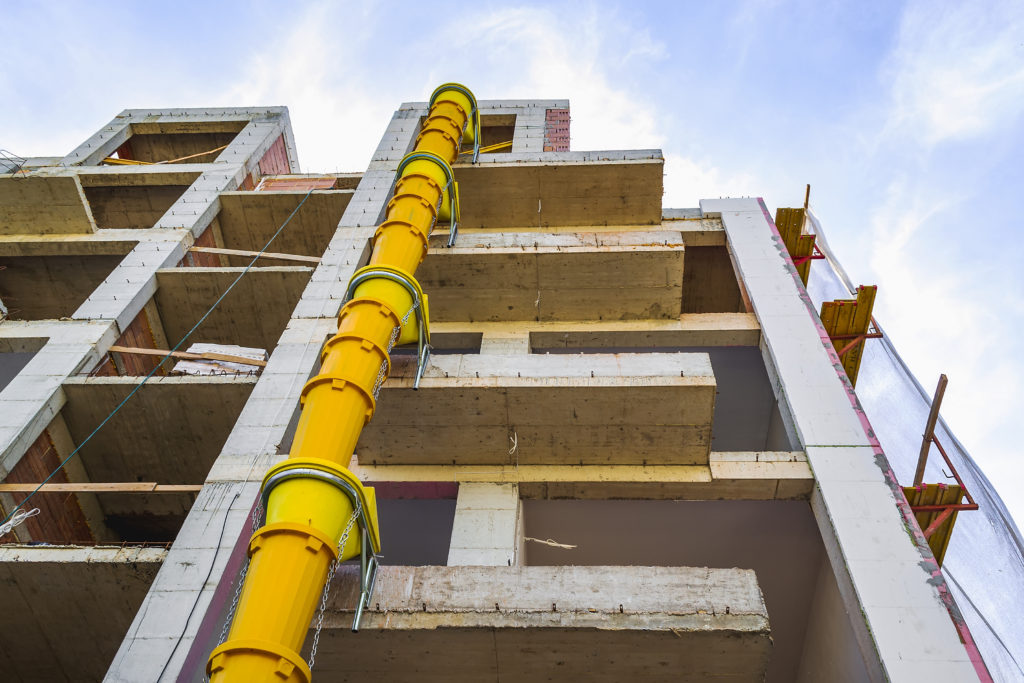
Debris chutes are specialized equipment designed for disposal of waste materials. They allow workers on rooftops or other elevated construction sites to remove debris and waste from the work area safely and efficiently. To prevent worksite injuries, it is important to understand the dangers posed by debris chutes.
What Types of Injuries Can Be Caused by Debris Chutes?
OSHA has set strict requirements for how debris chutes are built, secured, and used. When safety standards are not followed, serious injuries can result, including:
- Workers being crushed under chutes that becomes detached
- Workers falling through openings from unprotected sides or edges
- Falling debris from improperly installed chutes hitting workers below
Common causes of debris chute injuries include inadequate training, poor maintenance, and defective equipment. When chutes are not property constructed, installed, or secured, or when they are not used properly, workers can suffer serious injuries, including:
- Bone fractures
- Head trauma and brain injury
- Crush injuries
- Lacerations and contusions
How Can Debris Chute Injuries Be Prevented?
Under New York Labor Law 241, property owners and contractors must comply with construction safety rules created by the Department of Labor. Safe use of debris chutes is covered under Part 23 of the New York Industrial Code. The following steps can help prevent debris chute injuries:
- Use properly constructed chutes: Chutes more than 24 inches wide must be constructed of exterior grade plywood at least two inches thick or sheet metal at least 3/16 inch thick and must be rigidly supported throughout the height of the chute. The lower end of every chute must have gates and baffles installed to keep debris and materials from hitting people below.
- Enclose chutes entirely: When used on elevated levels, chutes must be entirely enclosed on all sides. The only openings should be for receiving and discharging materials and debris, and these openings must be covered when the chute is not in use.
- Provide protection at chute openings: Every debris chute opening at or below the level of the floor must be provided with a four-inch by four-inch curb or bumper.
- Post warning signs: A “DANGER” sign must be placed at the discharge end of every chute in a noticeable location to warn workers and visitors. The lettering of the sign must be at least six inches tall and in a color that contrasts with the background.
Other important factors in preventing debris chute injuries include proper training of workers, regular inspection and maintenance of equipment, and use of appropriate protective equipment. When companies fail to take these safety measures, construction workers can be hurt.
What Are Your Legal Options After Serious Debris Chute Injuries in New York?
Workers injured on the job in New York are entitled to workers’ compensation benefits. This insurance, carried by your employer, should cover your medical expenses related to the workplace injury and reimburse you for a portion of your lost wages, or for permanent disability. If another party other than your employer caused or contributed to your accident, you may also have a third party claim for compensation. In a civil case against a third party, you may claim noneconomic damages not covered by workers’ comp, such as pain and suffering.
If you have been hurt in a debris chute accident, it is in your best interests to speak with an experienced New York on the job injury attorney as soon as possible. At Wingate, Russotti, Shapiro, Moses & Halperin, LLP (WRSMH), we have a successful track record for our clients. We have been named among the Best Law Firms by U.S. News & World Report. Contact us at (212) 986-7353 to find out how we can help you.